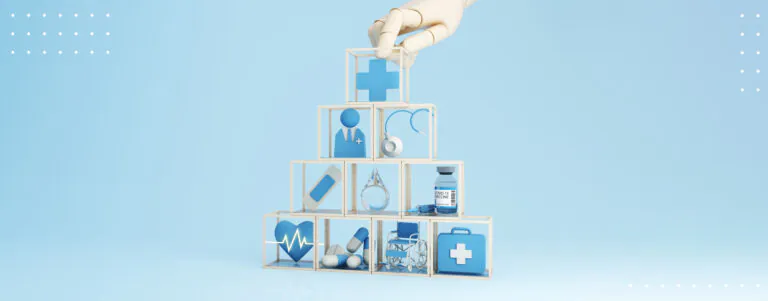How to Create a Mental Health App to Track Anxiety and Depression
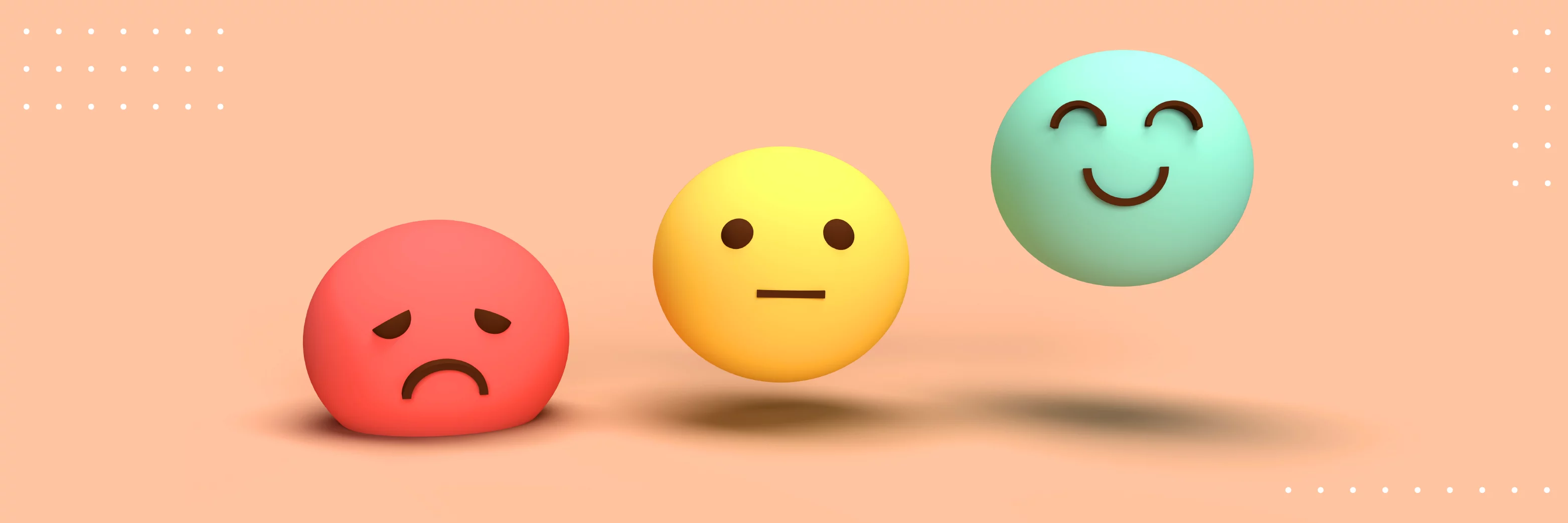
Key takeaways
- Find out why it is relevant to start a mental health app in 2024.
- Discover various types of mental health applications and the most successful examples.
- Explore the features that are required for your application to suit the demands of the users.
- Learn more about what aspects to consider when building a mental and emotional health app and gain helpful development tips from our experts.
- Read how our company can help you develop your own mental wellness app.
- Figure out how much time it will take to develop such a digital product and determine the approximate cost.
Mental health is an incredibly fragile and priceless thing. But mental health issues and disorders are still stigmatized in the media and everyday life. Because of that, people suffering from depression, anxiety, and other mental disorders become actors who have to wear masks of happiness and light-heartedness.
On top of that, costly traditional psychotherapy, pandemic restrictions, and limits in insurance bundles are those barriers that don’t allow people to obtain the treatment they deserve. Luckily, all hope isn’t gone, and the rapid growth of mental health apps is the silver bullet that can help people with mental issues overcome these challenges. Thus, continue reading this article to learn why it’s relevant to enter this niche despite seemingly high competition and find out key aspects to pay attention to while developing such a product.
Why You Should Build a Mental Health App in 2024
Growing demand
The number of people who struggle with anxiety, stress, or depression is rapidly growing, undoubtedly due to the
pandemic. According to the survey, both substance use problems (25% during the pandemic vs. 13% prior to the pandemic)
and suicidal thoughts (26% vs. 11%) have significantly grown. Another survey conducted by the KFF organization shows
that “during the pandemic, about 4 in 10 adults in the U.S. have reported symptoms of anxiety or depressive disorder, a
share that has been largely consistent, up from one in ten adults who reported these symptoms in 2019.”
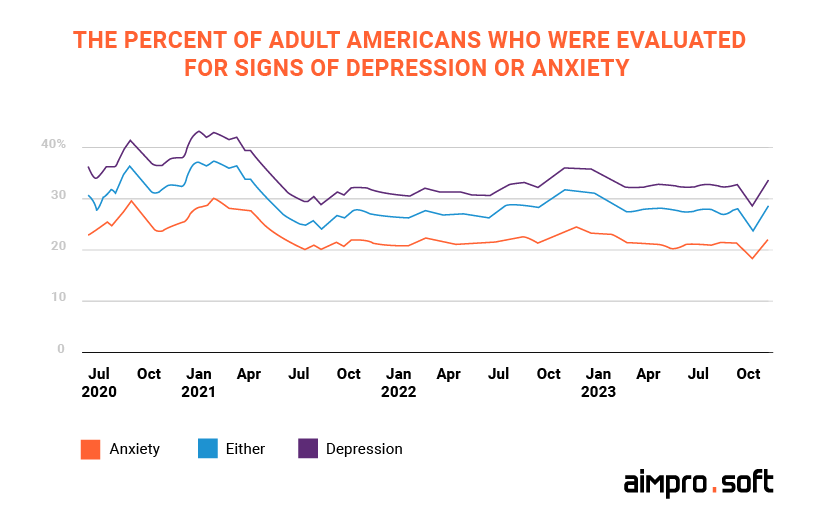
Because of isolation caused by the pandemic, people cannot always visit a psychologist, which has increased demand for helpful digital solutions and made the number of mental health applications skyrocket, topping over 20,000 mental health applications in the App Store and Play market
Affordability
According to the statistics, the number of U.S. citizens who don’t receive proper treatment has grown rapidly since
Mental health apps and web platforms provide a more affordable way to monitor mental
health and receive assistance, which is why they are so popular right now.
Moreover, this factor is another reason for developing a mental illnesses app, giving those in require an efficient yet cost-saving product.
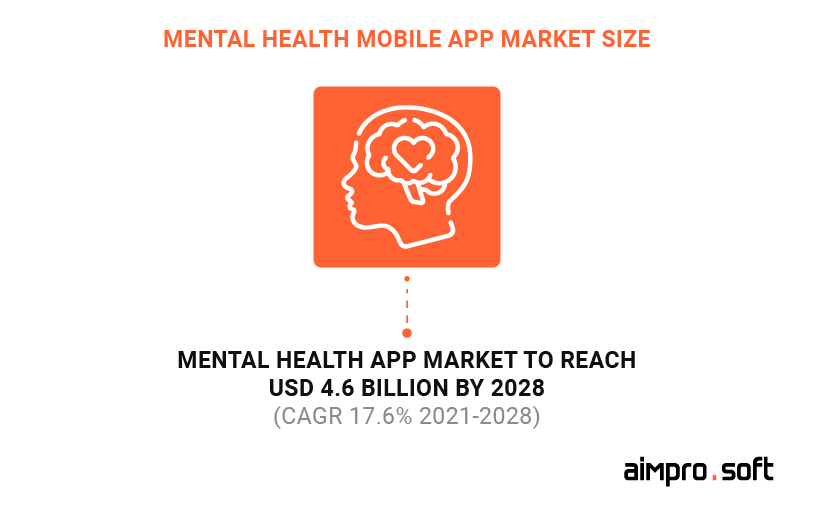
Competition is not a barrier
You may think that the competition is too strong and that the niche is too diverse. However, even the most popular
applications have flaws and do not match users’ needs perfectly. According to a Health Informatics Journal survey, users
frequently complain about various weaknesses of mental health services. One of the reasons for dissatisfaction is
improper data safety. In the case of a crash or data breach, users’ information is lost, which is critical for patients
who have been tracking their mental state for a long time.
In turn, those who suffer from panic attacks and require help anytime; complained about the absence of the offline mode.
These and many other imperfections that can be found in such apps make the competition not a challenge but a great
opportunity. Be sure to consider your competitors’ weaknesses and user reviews during depression app development or any
other type of a mental health app, and your product will be a success.
Once you consider all of the shortcomings that exist in a vast number of popular apps, you will be able to create a
mental health app based on the deliverables of such an in-depth competitive analysis.
Types of Mental Health Apps
A lack of understanding of the target audience and the app’s purpose is a common factor for applications failure. To
avoid such a mistake, we offer to look at the mental health and wellbeing app classification below that will allow you
to learn more about the diversity of such apps, unique characteristics, type of users who use them, and explore bright
examples.
| Types of mental health applications | Target audience | Main features | Examples |
|---|---|---|---|
| Educational (awareness mental health apps) | Such apps serve as a knowledge base and are meant to give users information about mental health issues. |
|
DiveThru |
| General mental health apps | Designed for people who require a mental app as a preventative measure, for self-improvement and control of mood patterns. |
|
Headspace, Calm, What’s Up, Woebot |
| Mental disorder apps (teletherapy apps) | Assist people with serious mental disorders including clinical depression, obsessive compulsive disorder (OCD), bipolar disorder, post-traumatic stress disorder (PTSD), etc. |
|
Recovery Record, NOCD, IMoodJournal, eMoods Bipolar |
| Chat apps for depression | Chat applications for depression allow users to find people with similar problems and obtain consultation from professionals. |
|
7 Cups, Therapeer, Betterhelp |
| Stress and anxiety tracking apps | Created for people who suffer from stress and moderate anxiety. |
|
Anxiety Release, Dare, iBreathe, MindShift CBT |
| Apps for addiction recovery | These applications are developed for recovering from addictions to alcohol, cigarettes, and other drugs. |
|
Quit That!, Twenty-Four Hours a Day, Sober Grid |
| Suicide prevention apps | Apps for people with suicidal thoughts. |
|
Better Stop Suicide, notOK, Suicide Prevention App |
| Multipurpose mental health apps | Apps that can help mentally healthy people and those who are suffering from serious mental illnesses. |
|
Happify, Talkspace, MoodKit, Moodfit |
Do you want to learn how to create a healthcare app? For further information, please check our guide.
Top 3 Successful Apps for Tracking Mental Health
So we looked at how applications are classified, their key characteristics, and who uses them in the previous section.
Let’s take a glance at some actual examples of apps whose creators picked the proper focus for their product and managed
to fill it with highly helpful features that people like.
Better Stop Suicide
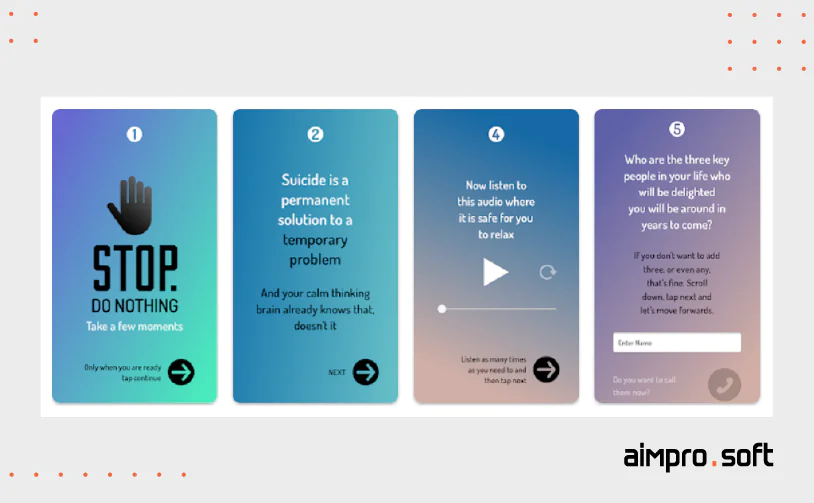
Type of mental health app: Suicide prevention apps
Background: Peter Grange (Co-Founder of Better company) had gone through a difficult divorce and the relocation of his
children to another country. After a series of unfortunate events, he was ready to end his life. Fortunately, he didn’t.
He found a professional therapist, John Halker (the other Better Co-Founder), who supported him through the dark times.
A few years later, Peter and John decided to develop an app to help others prevent suicide. With John’s long-time
experience in psychotherapy and Peter’s impressive experience running a digital advertising agency, they developed the
Better Stop Suicide app.
Description: Better Stop Suicide is a free app that gives people with suicidal tendencies a chance to press the “stop
button” and prevent a fatal outcome. The app offers its users various features, such as life-saving messages, calming
audio content, fast access to key phone contacts, better sleep audio, emotional needs check, and a variety of tasks to
improve mental health.
Outcome: Three months after the app’s launch, 97% of people who had thought or planned suicide indicated they were pleased they
changed their minds and are still alive, thanks to Better Stop Suicide.
Recovery record
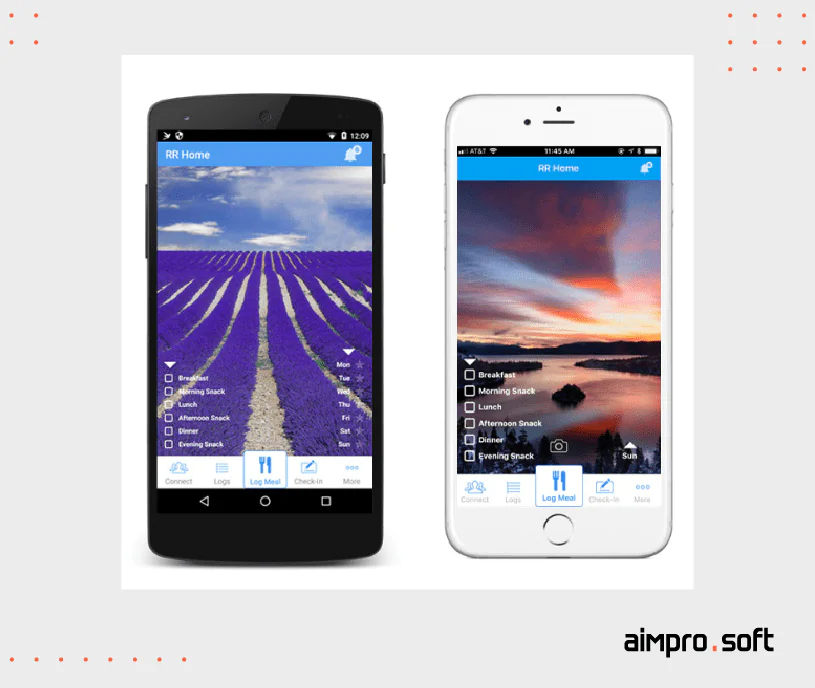
Type: Mental disorder apps
Background: In 2011, a small group of psychologists, technologists, and entrepreneurs decided to patent an eating
disorder app. The creators had no idea at this point that their invention would become so successful.
Description: Recovery record is an app designed for people recovering from eating disorders such as anorexia, bulimia,
obsessive eating disorder, and a compulsive eating disorder. The app’s features combine the basics of Cognitive
Behavioral Therapy and self-monitoring. Users can track their meals, feelings, and actions and get reminders, helpful
information, motivational quotes, etc. The team of mental health specialists is always available to help users.
Outcome: Recovery record is considered one of the most popular eating disorder apps. The number of users has already
passed one million, while eating disorder treatment specialists have reached 10,000.
Calm
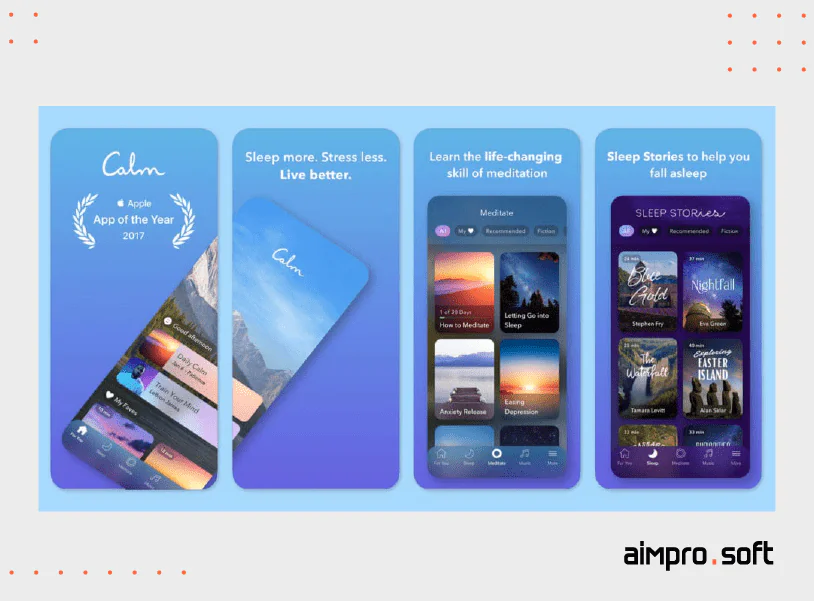
Type of mental health app: General mental health apps
Background: Michael Acton Smith and Alex Tew were always passionate about mental fitness, and they decided to find Calm
in 2012. The app’s mission is to assist people in living more bravely and humanely.
Description: Calm is an app aimed at improving mindfulness, the level of living, and staying calm in difficult
situations. Calm offers guided meditations, sleep tales, breathing programs, and calming music to people who are
stressed, feel anxious, or have insomnia.
Outcome: Now, Calm has been downloaded by over 100 million people, and this number is growing every day. Calm was named
“App of the Year” by Apple in 2017. In the CHT app ratings, Calm is at the top of the world’s happiest apps list. Users
of this platform have left more than 1.5 million positive five-star reviews. Sleep Stories were recorded with worldwide
stars such as Stephen Fry, Lucy Liu, Idris Elba, and others.
The achievements of these applications look really impressive and inspiring. And, if you want to create a mental health
app correctly and make it as popular as the examples above, keep reading about the must-have features you will
undoubtedly need while anxiety and depression app development or other types of apps.
Must-have Features for a Mental Wellness Application
This section aims to examine only core features in mental health apps. Mind that each type of such apps is different and
requires thorough market research, in-depth understanding of the disorder’s specifics, and analysis of users’ needs when
forming a feature set for your product.
| User | Feature | Description |
|---|---|---|
| Regular users, patients | Onboarding | This feature can carefully guide your users through the app’s functionality and the way to use the product. |
| Tools for self-monitoring | Users may independently track their mental health, stress levels, progress, and so forth. This feature should be added, especially in apps that help with depression. |
|
| Chat | Most digital mental health apps allow users to chat, leave audio messages, or have a video call with professional or community members who have a similar problem. |
|
| Emergency feature | It is essential to provide patients with a way to contact the doctor or a trusted person in case of an emergency. | |
| Learning materials | Including much educational material in the app is necessary for multiple purposes, including self-assessment, better understanding of the subject matter, ways to recover, etc. |
|
| Community | It is very important for people with mental illness to understand that they are not alone in their troubles. So, users should have access to the community where users can discuss their everyday experiences with each other. |
|
| Journaling | Many people just cannot physically write down their thoughts and feelings, and an electronic notebook will allow them to do so more easily. |
|
| Notifications & reminders | Mental and behavioral health applications must include reminders to take pills or do some tasks beneficial to one’s mental health. |
|
| Doctors, licensed coaches | Dashboard (both web and mobile versions) | A therapist dashboard is required for apps that engage therapists with patients. This feature enables doctors to keep track of their patient’s progress and keep critical information in one spot. |
| Chat with the patient | The app should have a chat or have video online sessions feature to help therapists better understand the patient’s condition. |
Important aspects to consider when it comes to functionality implementation of mental wellness application
In most cases, mental wellness applications fail mainly because their creators ignore a number of critical factors while
considering functionality or design. So, if you want to make a behavioral mental health app or any other type of mental
app, look at some aspects they frequently overlook that eventually lead to user churn and app abandonment.
-
Credibility and clinical basis
When creating mental help applications, it’s critical to engage the assistance of mental health professionals to give
reliable and helpful material and efficient practices. According to a report published in the Health Informatics
Journal, people who used apps designed for tracking anxiety and depression often complained about the absence of the
product’s credibility.In A Review and Content Analysis of the Depression App Marketplace, researchers analyzed 1,054 applications and found
that the well-being app development process often failed to involve health care professionals or academics and didn’t
include content aligned with clinical guidelines or behavior change theories or techniques. Based on the study examined
above, we can conclude that for your application to prosper in the market, you need to engage certified experts in this
field. -
Stigma concerns
Even in the 21st century, people with mental disorders still face stigma from society and even family members. People
suffering from mental diseases and those suffering from anxiety or stress face numerous challenges daily, so they don’t
need everyone to be informed of their specific mental health problems in social places. Avoid intrusive notifications or
logos that scream too much about the app’s direction so that the user won’t simply delete your app out of fear of
stigmatization. -
Offline mode
People suffering from mental illnesses may have emergencies, often in places with no Internet connectivity. For example,
people suffering from panic attacks or having suicidal intentions may urgently need the app to help them. In the study
mentioned earlier, it was noted that many users of mental health apps consider them useless unless they have an offline
mode built-in. So it’s vital to opt for an offline-first approach when developing the app so that no functionality will
be affected in case of intermittent lack of a network connection.
We analyzed the critical factors that must be considered while building mental health software. Once you implement those
must-have features, your application will be popular and useful for consumers.
How to develop a mental health app: key aspects to consider
So, how to develop a mental health app? The mental health app development process isn’t a piece of cake and requires
certain key points to be kept in mind if you don’t want to fail. In this section, we will discuss all the important
aspects to consider when creating mental health mobile apps.
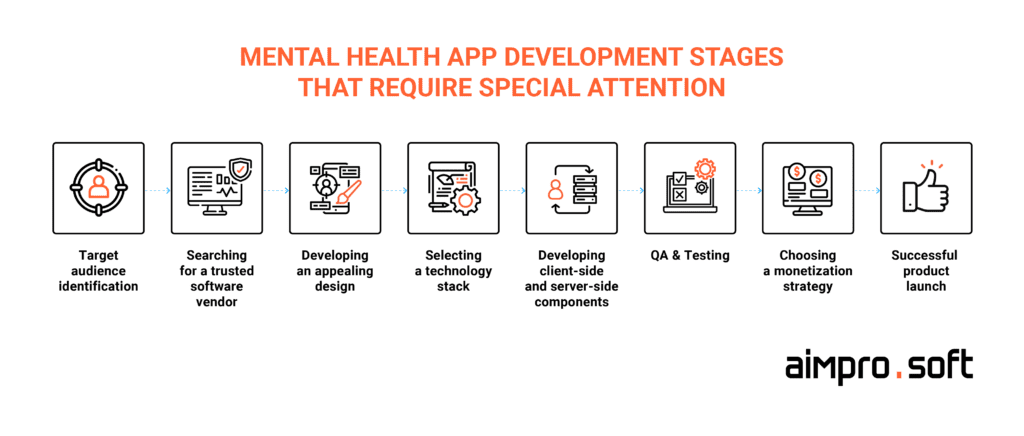
Defining target audience
You are well aware that there are various types of mental health apps, each targeting and satisfying the needs of
different groups of people. Each mental disorder has its peculiarities, which means that the app should be tailored to
it correspondingly. Furthermore, there are other factors to consider, such as cultural differences of your TA, age (a
small number of applications are designed for kids), user’s background, financial aspects, etc. It’s vital to define the
exact audience of your application to satisfy the needs of particular users and motivate them to use your app daily.
Choosing a trusted software vendor: things you need to know
Now that you’ve identified your target audience and overall concept, it’s time to select a vendor with whom you’ll
collaborate to develop the app. To produce a safe and compliant app that meets user expectations, mental health apps
require a very cautious selection of healthcare software development services. Consider the following factors while choosing a vendor:
- Expertise
The company’s solid portfolio and work on similar to your project cases can demonstrate that the vendor is aware of all
the difficulties of developing such solutions and has a well-established strategy for implementing well-being app
development. - Knowledge of project-relevant technologies
Another critical factor is the scope of technologies in which the software vendor is experienced. The chosen company
should have profound expertise in the tech stack you plan to use to start a mental health app. - Compliance
Compliance is a top priority for such apps. Thus, make sure that the vendor you have opted for is skilled in developing
compliant products, knows all the specifics, and has developers who have undergone compliance training and compliance
testing. - Qualification in ensuring the safety of healthcare products
The security of these apps is another key priority. Hence, opt for a company with a profound understanding of security
measures that must be applied in the course of the development.
Want to develop a mental health app with a trusted software vendor that meets the requirements mentioned above?
Book a consultation with our specialists, and we’ll discuss your idea.
Design process
Clever design is always the key to success because it is the “face” of your application. The design should be attractive
to the consumer, convenient and clear, so the user will return to the app as frequently as possible. However, in our
case, we are engaging with a very sensitive audience. So, UI/UX standards are pretty high when it comes to building a
mental and emotional health app.
Look at the numerous mental apps reviews in the Apple Store or Google Play. You’ll see that many people complain about
the overloaded interface, UX flaws, or irritating design. Nevertheless, you can avoid these flaws by investing in this
stage and approaching your app’s design meticulously. Let’s review key points to consider when approaching UI/UX:
-
Color scheme. Colors are essential in a mental health app design process. So, try to avoid bright, garish colors that may trigger
negative feelings, aggravate the user’s condition, etc., and instead opt for calm, preferably cool tones. Purple, for
example, is for meditation applications, while green is for stress and anxiety apps.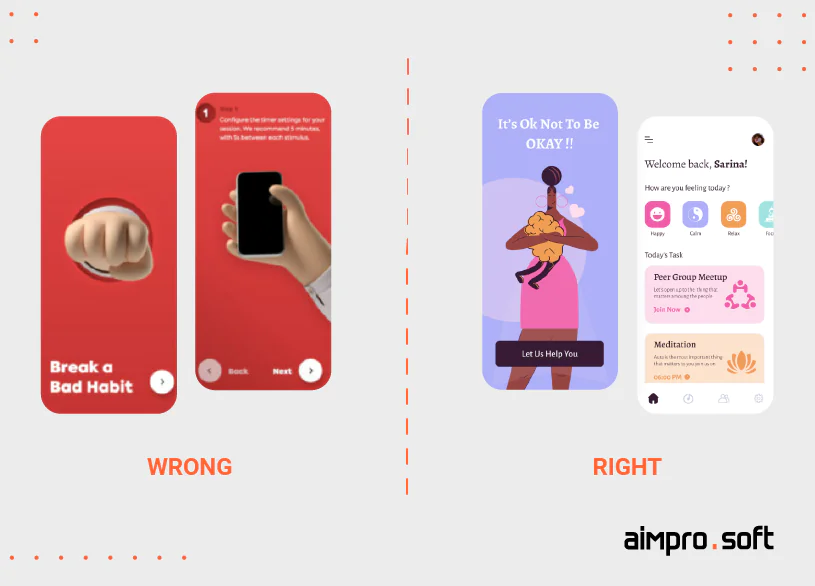
Wrong vs. right design ideas for mental health application -
Simple design. Usually, users of such apps prefer a minimalistic interface, not overloaded with information and excessive features.
-
Calm sounds. The sounds within the application should not be harsh or loud; instead, use calming music and sounds of nature.
By following these guidelines, you may design an app that will not trigger anyone’s symptoms and benefit the user.
Technology stack
The technologies you choose will significantly impact the performance, security, and seamless operation of your final
mobile app. Thus, let’s look at the table that contains the most popular technologies that should be used for native
Android and iOS app development.
| Category | Android technology stack | iOS technology stack |
|---|---|---|
| Programming languages | Kotlin, Java | Swift |
| IDE | Android Studio | Xcode |
| SDK | Android SDK | Cocoa Touch |
| Architecture pattern | MVVM (Model-View-ViewModel) architecture | VIPER |
| Library | Android JetPack components (Room database, Workmanager, Hild), Kotlin Coroutines, Kotlin Flow | RxSwift, Alamafire, SocketRocket, Firebase, RealmSwift, ReachabilitySwift |
| Technologies for UI layer | RecyclerView, Android JetPack Navigation | UIKit, UiCollectionView |
| Technologies for network layer | Retrofit 2 for network requests GSON for JSON parsing Glide/Picasso for loading images and caching |
Alamofire / NSURLSession for network requests Codable for JSON parsing Alamofirelmage for loading and caching images |
| Tools for testing | JUnit, Mockito, Robolectric, Esрresso | XСTest for unit tests |
| Integration with wearables | Bluetooth Low Energy | Bluetooth Low Energy |
The implementation of a hybrid app is supposed to be more time and cost-efficient than the development of a native one.
We recommend the creation of a hybrid mental illness tracking app if you have tight deadlines owing to fierce
competition, a small budget, and you need your app to work on both Android and iOS simultaneously. Therefore, we urge
that you be aware of the following hybrid app pitfalls:
- a restricted set of abilities;
- vulnerabilities in source code;
- limited access to smartphone hardware.
After analyzing the technology stack required to develop such a product, let’s look at the specifics of the mental
health app design process.
Aspects to consider when developing a client-side part of your app
Security
Users of digital therapy apps often share their sensitive information, expecting the highest degree of data security.
The proper security can be ensured with the help of the following security measures.
- complex data encryption;
- integration with authorized API;
- high-level cryptographic techniques;
- the usage of the Android Keystore system;
- usage of long-term cryptographic standards and algorithms, such as ATS.
- avoid keeping cryptographic keys locally or in the code;
- enhancement of possible authentication methods.
There are a few other things you should know about security. If your application includes text and video chats, you can
always protect them with a very high degree of security, such as end-to-end encryption or a ready-made solution, like Sendbird. Another way to protect a patient’s personal information is to guarantee that external access to all saved or
exchanged data is protected with the help of various authentication methods, such as passwords and usernames, and
biometric authentication techniques, like fingerprint (for Android and iOS) or face ID (for iOS), etc.
Performance
When creating a mental health app, keep the app’s performance in the account. You can improve your performance by
implementing the following practices:
- minimize slow rendering using Profile GPU Rendering or GPU Profier’s Visual Output, and optimize the hierarchy of Ul
components with Hierarchy Viewer; - distribute the workload among Ul and background threads.
Integration with wearables and other applications
Certain types of mental health apps require the integration of wearable devices or other third-party health or fitness
apps (such as Google Fit, Samsung Health app that can help with stress tracking, etc.) so that various health indicators
can be monitored and analyzed by the therapist or any other specialist that provides assistance for the user. When you
aim to enable the integration with certain devices, it’s important to take care of stable communication protocols,
security of data transmission, and compliance.
Aspects to consider when developing a server-side part of your app
Pay attention to the backend-related aspects listed below if you want to secure your application, ensure proper
scalability and high performance.
Technology stack
The technology stack can differ based on the type of mental health app, your request, the specialists’ expertise, and other factors. We also talked about choosing the right technology stack in a dedicated blog.
The most relevant options for developing such applications are listed below.
- Programming languages: Java, JavaScript, Python, .Net
- Frameworks & libraries: depends on the programming language
- Search engines: Elasticsearch, Solr
- Web/Application server: depends on the programming language
- Caching: Redis, Memcached
- Hosting: AWS, GCP, Microsoft Azure
- Databases: MySQL, MSSQL, PostgreSQL, MongoDB, Apache CouchDB
- Analytics and monitoring: Amazon CloudWatch, vRealize Log Insight, Grafana
- Source code storage: GitHub, AWS CodeCommit, GitLab
- Other tools: GitLab CI, TeamCity, GoCD, Jenkins, Terraform
- Security analysis tools: SonarQube
Security
We have mentioned security measures that we recommend adopting for the security of your product in part on the
client-side development of a mental health app. So, let’s explore the leading practices for server-side development.
- Usage of security measures outlined by OWASP
Companies should refer to the OWASP top 10 to avoid various security issues. The OWASP Top 10 is a list of the most
common security vulnerabilities. It provides a general opinion on the most serious security threats to the digital
product that should be considered in the course of your mental health app’s backend development. At Aimprosoft, our
specialists always adhere to OWASP secure coding practices, ensuring our clients provide their users with a highly
secure product. - Secure hosting
When choosing a hosting web package, security should be a top priority. Never neglect a secure hosting that performs
frequent backups. Otherwise, you risk losing all of your data, as well as the time and money you invested in the
application. To ensure the security of your users’ data, choose a trustworthy, top-rated cloud web hosting provider,
such as AWS, A2 Hosting, HostGator, or InMotion. - Data encryption in transit and at rest
When you want to build your own mental health solution, one of the most efficient and mandatory security precautions is
to use SSL data encryption. It stops hackers from accessing sensitive data from your users while it is in transit. In
turn, data protection at rest aims to secure inactive data stored on any device or network. Apart from encryption,
tokenization, implementation of secure key management, enhancement of access control are one of the most efficient
practices to secure your data at rest. - Software components updates
When you aim to create a medical app, regular software updates should be a top priority since out-of-date software
components may jeopardize its safety. Always ensure that all aspects of your applications are up to date, whether it’s
the most recent version of the plugin, library, or any other software component, to ensure that there are no open app
vulnerabilities. For example, recently, a 0-day vulnerability was discovered in the popular Java logging library log4j
(version 2). The vulnerability 0-day is classified as severe with a CVSS score of 10 (the highest score possible).When the vulnerability was identified, The Conversation stated that it could significantly damage companies since
hackers aimed to “find vulnerable servers and set up machines that can deliver malicious payloads.” To avoid such risky
situations, all software components must be audited regularly by an expert such as DevSecOps. Such specialists can
conduct the audit, identify the need for the update, and build a regular automated process of updating components.
Scalability
Scalability is especially crucial in the context of mental health applications. Scalability refers to an application’s
capacity to manage an increasing number of users and corresponding workload. Thus, to maintain the growth of users and
the ability to handle the expansion of the exchanged data, it is necessary to plan this aspect and support horizontal
and vertical scalability.
Interoperability
The most difficult challenge in the healthcare industry is interoperability. It refers to the smooth interchange of data
between various systems, devices, and applications. When building an app linked with current hospital systems,
equipment, or devices, you must ensure that your app will be able to interact with them via APIs securely and
seamlessly.
Compliance
It’s highly important to ensure that your application complies with HIPAA. If your application contains information on a
patient’s health and condition, it becomes a HIPAA subject by default. HIPAA is a federal law established in the United
States in 1996 that ensures the confidentiality of patient records and data.
Learn how to build a HIPAA-compliant chat API and SDK for your application.
Of course, HIPAA is not the only standard. Different laws are required depending on where you are from or what country’s
inhabitants use your app. There are several other examples of regulatory compliance:
- GDPR — General adjustment on the Protection of Personal Data – a regulation of the European Union.
- PIPEDA — The Personal Information Protection and Electronic Documents Act governs how confidential information is handled in
Canada.
Violations of HIPAA or other regulations lead to significant financial losses in the form of fines, as well as a danger
to your reputation.
Testing
It is necessary to hire experienced QA engineers to your team because they evaluate whether the product complies with
your requirements and development standards, identify weak areas, and help to deliver an errorless product. Testing can
greatly minimize the number of bugs and help provide users with a correctly functioning product that can meet their
expectations and convert them into loyal ones.
Read about our QA department’s approach to the testing stage.
Monetization strategy
Surely you don’t want to make a mental health app for a charity. However, mental health applications are a sensitive
topic, and the choice of the monetization strategy should be approached carefully. So, let’s take a look at a few
examples of monetizing such a product:
- In-app purchases (freemium model) — you can always add paid features to your app. The basic feature set will be free of charge, but if users want to use
extra features or have access to certain content, they may buy it through the app. - Subscription plans — such applications usually provide a free trial period that is only available for a limited time and then offer its
users several paid subscriptions plans so that users can choose the most convenient one for them. - Paid apps — the users don’t have access to the app before buying it in the appropriate app store. Such a strategy is mostly
relevant for highly popular apps that are well-known among users. Still, users should be provided with a free trial
period. - In-app ads — of course, you can include advertisements in your app. Nonetheless, you must tread cautiously with this option due to
its specialized audience and purpose. This monetization approach shouldn’t be used in a psychiatry disorders app.
Therefore, all of these monetization strategies depend on your app’s type and target audience.
How Much Does it Cost to Make a Mental Health App
It’s nearly impossible to provide a precise cost without discussing your idea’s specifics. The cost and time of mental
health app development depend on numerous factors, such as features, product complexity, deadlines, budget, etc. Before
developing a full-fledged product, it is preferable to start with the MVP (minimum viable product) version. MVP helps
analyze project viability and relevance and before investing in a full-fledged version of the product.
The outcomes of MVP testing and feedback from the target audience help identify whether the project is worth developing
further, what list of features should be added, and what should be improved. Thus, let’s consider the list of core
features of a mental health test app that should be included in an MVP version of such a product:
- Sign up
- Onboarding
- User profile & settings
- Self-monitoring tools (mood tracker, journaling, checklists)
- Daily affirmations
- Trigger checkers
- Knowledge base
- Emergency support
- Notifications, reminders
The full-fledged version of your mental health app may require more difficult functionality to be added to the MVP
features set. Thus, for example, some mental health apps may have a chat with the ability to consult with a doctor,
while others may have a function of integration with wearable devices, and so on.
| Stages | MVP (two platforms) ~ 960 — 1307 hours |
|---|---|
| Discovery stage (Business Analysis + Technical specification) | 40 — 100 |
| UX research + UI | 200 — 235 |
| iOS/Android development | 120 — 174 for each platform |
| Backend | 200 — 240 |
| QA+testing | 80 — 104 |
| CI/CD | 100 — 140 for each platform |
The data presented above is the approximate time necessary to build a mental health app on two platforms. If you choose
to deploy your app on one market, such as Google Play, it will take roughly 640 hours to create.
In turn, the cost of creating a mental health app is determined mainly by the location of the software vendor. The cost
difference of software services among the following geographic locations is shown in the comparative table below:
| Country | Average hourly rate | MVP (two platforms) ~ 960 — 1307 hours |
|---|---|---|
| USA | $80 | $76 800 — 104 560 |
| Western Europe (Germany) | $65 | $62 400 — 84 955 |
| UK | $70 | $67 200 — 91 490 |
| Eastern Europe (Ukraine) | $40 | $38 400 —52 280 |
According to market statistics, the average UK developer’s hourly rate is two times higher than the ones’ from the
majority of Eastern European countries (for example, Ukraine). Thus, if you want to start a depression app or any other
type of mental health application with a health software development company in the United States, the cost may reach up to
$104,560. On the contrary, the app’s creation with a software vendor from Ukraine, for instance, that will have the same
expertise and understanding of the healthcare niche, can be $52,280.
How We Can Help
We have been developing a wide range of healthcare products for more than 10 years which allowed us to gain a solid
portfolio, precise understanding of the needs of the businesses, and challenges of medical software implementation. We
implement well-being solutions for all popular platforms, including native apps for iOS and Android, cross-platform and
hybrid medical apps, web platforms, Liferay-based patient portals, hospital management systems built with the
capabilities of the Alfresco platform, EHR and CRM systems, and many others.
Background. We managed to apply the obtained knowledge and expertise to implement the product for one of our clients
from Italy who came with the request to assist with the implementation of two well-being mobile apps for iOS and Android
platforms and the doctor’s web-based portal.
Solution. The developed apps help users monitor their health indicators, such as heart rate, stress degree, blood
pressure, and others. Our developers made sure that the apps could be easily connected to various wearables that gather,
process, display, and store all incoming data related to the person’s health. Besides, users can share the obtained
measurements seamlessly with their doctors. Overall, our team integrated the app with a number of health platforms such
as Google Fit, Samsung Digital Health, Hint, Walgreens, and others, ensuring the developed products are full-fledged
health monitoring solutions.
The solutions’ functionality also encompasses several self-monitoring features, namely a journal that they could use to
write about stress triggers, their mood and condition, a tracker to monitor anxious thoughts, and others. The developers
also implemented smart charts that help users easily view and analyze all the measurements taken with the help of
wearable devices. Apart from that, our team implemented an activity calendar, reminders, configured in-app purchases,
and a measurement sharing feature.
Outcome. Our fruitful collaboration with the client resulted in a successful launch and deployment of the product on
both stores. Currently, the iOS-based app has received more than 17,000 positive reviews on the App Store, while the
Android-based one has approximately 5,000 positive reviews with a 4,7 average review score. The users praise the product
for its convenience, minimalistic design, and useful functionality.
Conclusion
There is no doubt that the market of mental health mobile apps has a bright future. Every year, more people begin to pay
attention to their mental well-being and search for accessible and efficient solutions that would allow them to obtain
the help they deserve. App for tracking mental health turned out to be an affordable tool that can be used to enable
better mental health. Don’t hesitate to contact us if you want to start a depression app or any other type of mental
health app but simply lack an experienced software vendor who will breathe life into your idea.
FAQ
Can I get a good profit from a mental health app?
Of course, you can! Thanks to the rapidly growing number of users and extreme popularity of such types of apps, it’s
possible than ever before to profit from such a product. For example, in 2019, Calm, one of the most popular meditation
apps, earned $150 million. However, to achieve such a goal, you need a trusted software vendor with experience in
healthcare development, in-depth business analysis, proper monetization strategy, and a bit of courage.
Should I develop my app in collaboration with medical experts?
According to the survey published in the Health Informatics Journal, people who used anti-depression applications and
other mental apps stated that the reason which made them abandon the downloaded apps was that the products weren’t
credible. As a result, we may say that in order for your product to succeed in the market, you must collaborate with
clinical experts on the course of your product development.
Why must a mental health care app be compliant?
Compliance with the healthcare industry’s regulations is a top priority since an inability to protect patients’ personal
information can result in data breaches, information loss, etc., and potential legal ramifications in the form of
significant fines.



